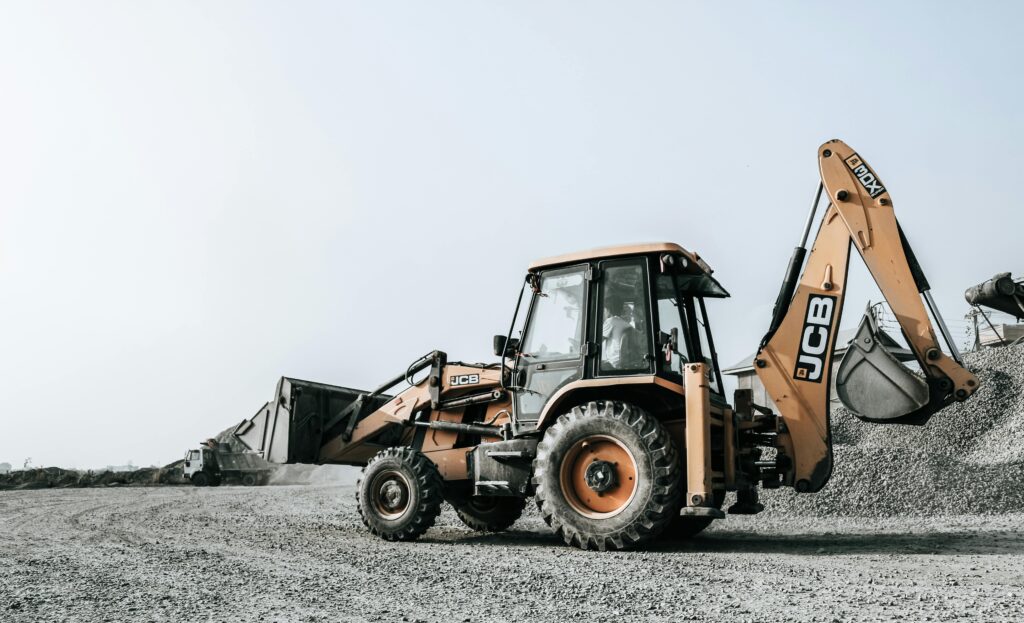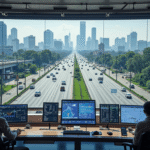JCB San Antonio Factory Hits Overdrive to Outrun Tariffs
When faced with escalating tariffs, the JCB San Antonio Factory doubled its planned footprint—supercharging U.S. production capacity to outpace trade pressures and lock in long-term market strength.
Rising to the Challenge: Doubling Down in San Antonio
The newly expanded JCB San Antonio Factory is now a sprawling 1 million square feet, set on over 400 acres in Bexar County, Texas. This bold escalation—double the initially planned size—comes as a direct counter to the recently implemented 10% U.S. tariffs on imported UK machinery.
Industry sources such as Manufacturing Dive and Construction Today confirm the facility’s expansion represents one of the most significant recent industrial investments in Texas manufacturing. By increasing domestic output, JCB shields itself from tariff pressures and positions itself for faster market response.
According to JCB CEO Graeme Macdonald, this expansion offers a “medium-term solution” to safeguard competitiveness in the face of trade policy changes.
Anchoring Growth: Jobs, Investment, and Community Impact
The JCB San Antonio Factory is more than a machinery plant—it’s a catalyst for regional economic growth. Once fully operational, it will employ up to 1,500 people, with average wages of $54,889. These are not just jobs; they are well-paying, stable roles designed to attract skilled talent from San Antonio and surrounding counties.
JCB is actively recruiting through local schools, technical colleges, and nonprofits like Haven for Hope, an organization dedicated to supporting underserved communities. This inclusive hiring strategy underscores JCB’s commitment to social responsibility and local workforce development.
Public-private incentives are also central to the project’s success:
- $14 million in city tax breaks.
- $12 million in county funding.
- $3.75 million in state sales tax refunds.
These incentives, reported by San Antonio Report and MySA, make the JCB San Antonio Factory a model of how government and industry can collaborate to boost local economies.
Project Timeline: From Groundbreaking to Production
Groundbreaking took place in mid-2024, with construction teams now working at full pace. The factory is expected to begin producing Loadall telescopic handlers and aerial platforms by 2027.
The fast-tracked construction schedule illustrates how the JCB San Antonio Factory is not just about size but also about speed—a critical factor in beating tariff deadlines and maintaining U.S. market momentum.
A Campus Built for People and Productivity
The design philosophy behind the JCB San Antonio Factory blends cutting-edge industrial engineering with employee well-being. Inspired by campus models from leading companies like USAA, the site will feature:
- Wellness and fitness facilities.
- Landscaped green spaces.
- Walking and cycling trails.
- A restored historic ranch house, integrated into the visitor center to celebrate local heritage.
This approach not only boosts productivity but also supports retention in a competitive labour market.
Balancing Growth with Community Concerns
Large-scale industrial projects inevitably bring challenges, and the JCB San Antonio Factory is no exception. Some residents have raised concerns about increased traffic, environmental impact, and zoning changes.
To address these, city planners are prioritizing infrastructure upgrades, including the long-discussed South Texas Parkway. Collaboration between JCB and District 4 leaders has been crucial in ensuring that the expansion provides shared benefits without compromising the community’s quality of life.
Strategic Significance: Tariff Defense and Market Access
The United States is among the largest global markets for construction machinery, and producing locally is a strategic win. By operating within U.S. borders, the JCB San Antonio Factory avoids costly tariff exposure and reduces shipping delays, giving JCB a competitive edge.
This move positions JCB closer to key distribution hubs, allowing for faster deliveries to North American customers and strengthening the company’s resilience against global trade uncertainties.
Economic Resilience in a Changing Trade Landscape
The expansion of the JCB San Antonio Factory signals a long-term strategic shift in global manufacturing. Rather than relying heavily on UK exports, JCB is decentralizing production to remain agile amid fluctuating trade agreements.
Local manufacturing reduces dependency on international logistics, mitigates currency risks, and ensures compliance with U.S. regulations—benefits that will endure long after current tariffs expire.
Future Outlook: Innovation, Sustainability, and Expansion Potential
While initial production will focus on telescopic handlers, the JCB San Antonio Factory has been designed with adaptability in mind. Future phases could include:
- Additional equipment lines.
- Automated assembly systems.
- Integration of battery-powered or hydrogen-fueled machinery.
By incorporating flexible infrastructure, JCB is ensuring that the site can evolve alongside industry trends, particularly in sustainable construction technology.
Conclusion: Building More Than a Factory
The JCB San Antonio Factory overdrive is about more than physical expansion—it’s about strategic foresight. By doubling its footprint, creating quality jobs, and investing in infrastructure, JCB is reinforcing its North American presence while shielding itself from tariff shocks.
In doing so, the company is sending a clear message: it is ready not just to survive in a challenging trade climate, but to thrive.
Get All the Construction Updates and Trends:
Stay informed on the latest in global construction industry trends, technology, and market shifts. Visit ConstructionFrontier.com for in-depth news and expert insights.





